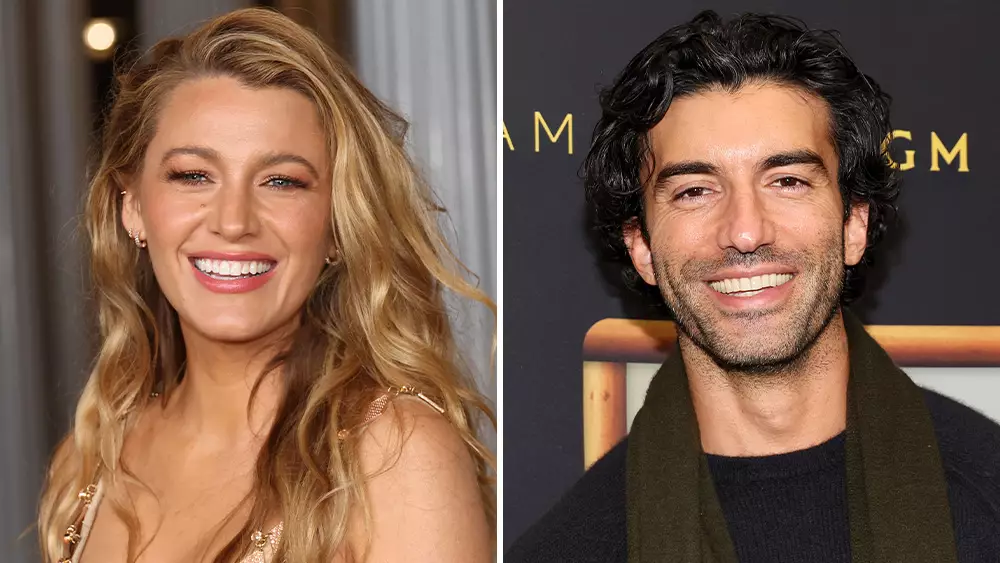In the glitzy world of Hollywood, where glitter and glamour often mask complexities beneath the surface, the recent legal drama involving Blake Lively and Justin Baldoni has uncovered the darker aspects of the entertainment industry. Just days after Lively filed a complaint alleging sexual harassment and retaliation with California’s Civil Rights Department, she escalated her battle, taking the conflict to federal court in New York. This situation highlights not only the personal stakes for the involved parties but also the systemic issues within Hollywood concerning workplace safety and accountability.
Lively’s legal actions against Baldoni and his team consist of a broad array of allegations—thirteen counts in total. Central to these claims is the assertion that the way Baldoni and his production company, Wayfarer Studios, allegedly retaliated against Lively was not just unprofessional but illegal under both state and federal laws. The complaint positions the behavior exhibited by Baldoni as part of a coordinated plan to silence not just Lively but anyone who might dare speak out about the allegedly hostile environment that he and others cultivated during the filming of *It Ends With Us*.
The lawsuit seeks unspecified damages, and it is clear that Lively aims to clarify the extent of the alleged misconduct and challenge the narratives constructed against her. The implications are serious: if Lively’s claims are substantiated, they could set a significant precedent within Hollywood for how sexual harassment and retaliation cases are handled, especially in a high-stakes environment swirling with public interest and media scrutiny.
Interestingly, this legal battle corresponds with Baldoni’s own reactionary lawsuit against The New York Times for its December article detailing the accusations made by Lively. Baldoni’s suit claims that the article misrepresented communications between his public relations team, which he insists were taken out of context, resulting in damaging portrayals of him. He maintains his innocence, asserting that he has never acted inappropriately toward Lively.
This back-and-forth illustrates how public figures often mobilize legal mechanisms to combat personal and professional attacks, effectively shifting the public narrative and pulling their private grievances into the spotlight. The media becomes a crucial battlefield, where perceptions are formed not just based on facts but also the manner in which each side leverages press coverage.
Social media serves as both a platform for expression and a double-edged sword, especially in cases like this. While it enables voices like Lively’s to gain traction and support, it also provides a medium through which personal conflicts can spiral into public controversies. Following Lively’s initial complaint, conversations around workplace safety and harassment have circulated widely on platforms like Twitter and Instagram, empowering both allies and adversaries to express their views.
The comments made by Baldoni’s PR team, including an admission of private “jokes” about Lively’s grievances, reveal the toxic dynamics that can pervade a professional environment. It raises questions about the responsibility of those in power to create an atmosphere that nurtures respect and delineates boundaries, as opposed to fostering an environment fraught with condescension and aggression.
With the stage set for a prolonged legal battle, the future remains uncertain not just for Lively and Baldoni, but for the wider industry. Lively’s legal team has emphasized that her actions—filing complaints with both state and federal authorities—were made after exhausting other avenues to address her grievances, underscoring the difficulties faced by individuals who dare to challenge the status quo.
As the situation unfolds, industry insiders and the public alike will observe closely—not merely for the outcomes of these lawsuits, but for the larger conversation they ignite regarding systemic change in Hollywood. Will this legal confrontation prompt a reevaluation of workplace culture, particularly in high-pressure environments where the stakes are significantly high?
The turmoil surrounding Blake Lively and Justin Baldoni exemplifies much more than a singular confrontation between two Hollywood figures; it reflects broader systemic issues plaguing the industry. It highlights the urgent need for transparency, accountability, and a reevaluation of the protocols that govern workplace interactions. As both lawsuits proceed through the legal system, one can hope that this confrontation will yield not only justice for those personally affected but also contribute to meaningful changes in how Hollywood addresses and handles allegations of harassment and retaliation in the future.

